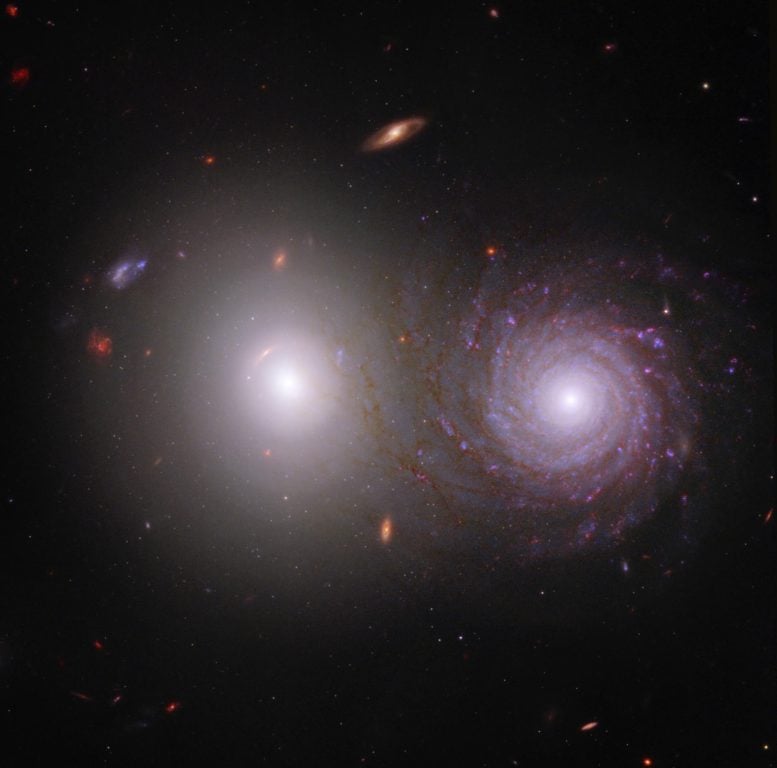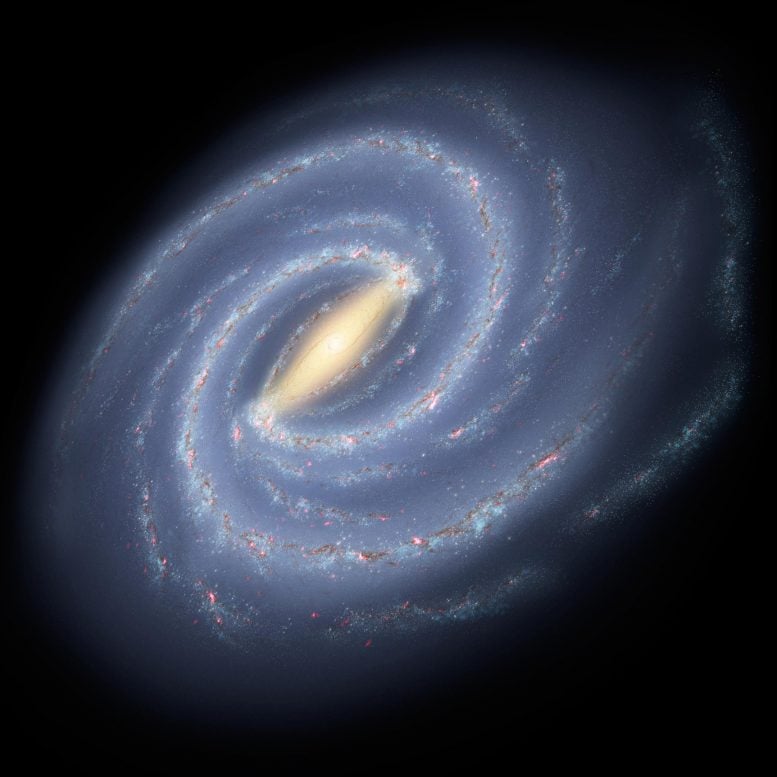Astrophysicists have discovered why spiral galaxies like the Milky Way are so rare in the supergalactic plane, a dense region of our local universe. The study, led by Durham University and the University of Helsinki, used Sibelius supercomputer simulations to show that galaxies in dense star clusters on the plane often merge, transforming spiral galaxies into elliptical galaxies. The discovery is consistent with telescopic observations and supports the Standard Model of the Universe, helping to explain long-standing cosmic anomalies in the distribution of galaxies.
Astrophysicists say they have found the answer to why spiral galaxies are like our own Milky Way A part of our local universe called the Supergalactic Plane is largely missing.
The Supergalactic Plane is a massive flat structure extending nearly a billion light-years into which our Milky Way galaxy is embedded.
While the plane is filled with bright elliptical galaxies, bright disk galaxies with spiral arms are very rare.
Now, an international team of researchers, co-led by Durham University in the UK and the University of Helsinki in Finland, says that the different distributions of elliptical and disk galaxies arise naturally due to contrasting environments on and off the plane.

This image shows an elliptical galaxy (left) and a spiral galaxy (right) and includes near-infrared light from the James Webb Space Telescope and ultraviolet and visible light from the Hubble Space Telescope. Image credits: NASA, ESA, CSA, Rogier Windhorst (ASU), William Keel (University of Alabama), Stuart Wyithe (University of Melbourne), JWST PEARLS team, Alyssa Pagan (STScI)
Galaxy evolution in dense star clusters
In dense galaxy clusters found on the supergalactic plane, galaxies frequently interact and merge with other galaxies. This transforms spiral galaxies into elliptical galaxies—smooth galaxies with no obvious internal structure or spiral arms—and leads to the growth of supermassive black holes.
In contrast, galaxies far away from the plane can evolve in relative isolation, which helps them maintain their spiral structure.
Innovative simulations and key findings
Research results published in journal natural astronomy.
The Milky Way is part of the Supergalactic Plane, which contains several massive galaxy clusters and thousands of individual galaxies. The vast majority of galaxies found here are elliptical galaxies.
The team used the SIBELIUS (Simulation of the Universe Beyond the Local) supercomputer to conduct simulations that tracked the evolution of the universe from the early universe to the present day 13.8 billion years ago.

The distribution of the brightest galaxies in the local universe, observed in the 2MASS survey (left) and reproduced in the SIBELIUS simulation (right). Both panels show projections in supergalactic coordinates, accurate to approximately 100 megaparsecs (Mpc). The nearly vertical empty streaks represent the regions of sky hidden behind our Milky Way galaxy. The simulation accurately reproduces the structures seen in the local universe.Photo credit: Dr. Tier Zavala
While most cosmological simulations consider random patches of the universe and cannot be compared directly with observations, Sibelius aimed to accurately reproduce observed structures, including the supergalactic plane. The final simulation is very consistent with observations of the universe through telescopes.
Research contribution and significance
Study co-author Professor Carlos Frenk, Ogden Professor of Fundamental Physics at Durham University’s Institute of Computational Cosmology, said: “The distribution of galaxies on the supergalactic plane is really striking.
“This situation is rare, but not entirely unusual: our simulations reveal intimate details of galaxy formation, such as the transformation of spiral shapes into ellipses through galaxy mergers.
“Furthermore, simulations show that the Standard Model of our Universe, based on the idea that most of its mass is cold dark matter, can reproduce the most striking structures in the Universe, including the spectacular structures to which the Milky Way belongs.”
The peculiar separation of spiral and elliptical galaxies in the local universe has been known since the 1960s and features on a list of “cosmic anomalies” recently compiled by renowned cosmologist and 2019 Nobel Prize winner Professor Jim Peebles prominent position.
Dr Till Sawala, lead author of the study and a postdoctoral researcher at Durham University and the University of Helsinki, said: “Last December I was accidentally invited to attend a memorial ceremony in Durham in memory of Jim Peebles. Peebles’ symposium, where he raised this question in his paper. Lecture.
“I realized that we had completed simulations that might contain the answer. Our study showed that known mechanisms of galaxy evolution also apply to this unique cosmic environment.”
Reference: “Different distributions of elliptical and disk galaxies in local superclusters as predicted by ΛCDM” by Till Sawala, Carlos Frenk, Jens Jasche, Peter H. Johansson and Guilhem Lavaux, November 20, 2023 natural astronomy.
DOI: 10.1038/s41550-023-02130-6
Supercomputer simulations were performed on the Cosmic Machine (COSMA 8) supercomputer hosted by the Institute of Computational Cosmology at Durham University on behalf of the DiRAC High Performance Computing Facility in the UK and on the Mahti supercomputer at CSC in Finland.
The research was funded by the European Research Council, the Academy of Finland and the UK Science and Technology Facilities Council.
#Explanation #cosmic #weirdness #Astrophysicists #discover #supergalactic #plane #lacks #spiral #galaxies
Image Source : scitechdaily.com
